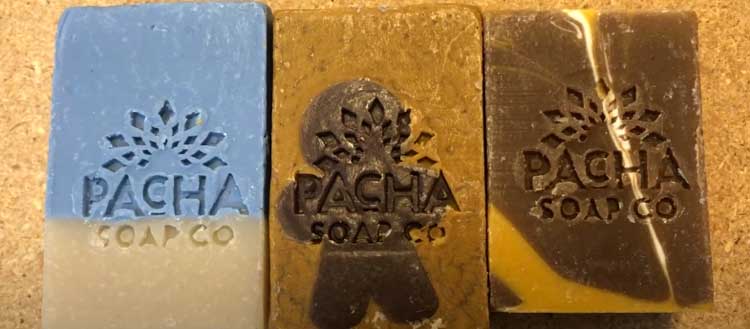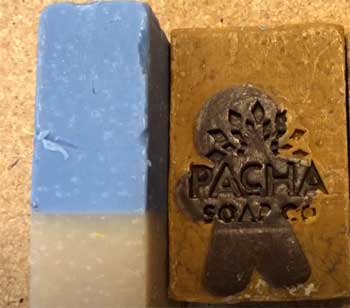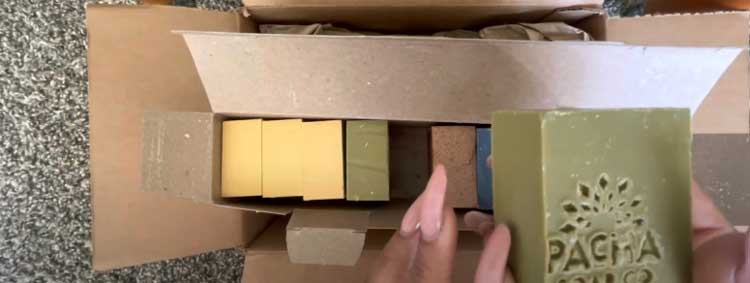When I first heard about Pacha Soap, I was intrigued by the rave reviews about its wonderful scent and the luxurious feel it supposedly brings to your skin. If you’re like me and enjoy experimenting with different soaps, you might be curious to try Pacha Soap for yourself.
If you’re looking to purchase this product, it’s widely available at places like Whole Foods, Thrive Market, and other online retailers. However, before you make that purchase, let’s talk about whether this soap truly lives up to the hype.
My Experience With Pacha Soap

I decided to try out Pacha Soap after hearing about its captivating scent and the promise of an all-natural, eco-friendly product. The bar I got had a subtle fragrance that wasn’t overpowering but definitely pleasant.
It lathered well, and I could feel the rich texture as I worked it into my skin. But here’s the thing—while it felt luxurious in the moment, there are a few things you should know before adding this soap to your cart.
The Good: What Pacha Soap Does Well
- Scent and Quality
Let’s start with what works. Pacha Soap has a gentle, pleasant scent that lingers on the skin without being too overpowering. It’s the kind of fragrance that makes you feel fresh and clean, which is precisely what you want from a bar of soap.
The quality is also commendable. The soap lathers up nicely and feels creamy, making it enjoyable to use. I noticed that it didn’t leave my skin feeling stripped or dry, which is a huge plus for someone with sensitive skin like mine.
- Long-Lasting
Another aspect I appreciated was the durability of the bar. Pacha Soap doesn’t melt away quickly, unlike some natural soaps that seem to vanish after a few uses.
This one held up well, and I found that a single bar could last quite a while, making it a cost-effective option in the long run.
- Ethical Business Practices
Pacha Soap is known for its commitment to ethical sourcing and giving back to communities. The company supports clean water initiatives and helps fund small business ventures in developing countries.
If you’re someone who likes to support brands with a conscience, this might be a point in Pacha Soap’s favor.
The Bad: Concerns and Drawbacks
- Inconsistent Scent Strength

One of the first things that caught my attention was the inconsistency in the scent strength.
While some people rave about how strong and long-lasting the scent is, my experience was different.
The bar I received had a much milder fragrance compared to what I had expected based on the reviews.
This inconsistency can be disappointing, especially if you’re someone who loves a strong, lingering scent.
- The Palm Oil Controversy
Now, let’s talk about the elephant in the room—palm oil. Pacha Soap uses palm oil as a primary ingredient, which has sparked quite a bit of controversy. Palm oil production is linked to deforestation and habitat destruction, particularly in rainforests.
For those of us who try to be conscious consumers, this is a significant drawback. While the company claims to source palm oil responsibly, the fact that it’s used at all is enough for many to avoid the product.
- Not the Freshest Option
There’s also the issue of freshness. A friend of mine swore by the soap’s scent, but when I ordered mine, it didn’t pack the same punch. I suspect the soap wasn’t as fresh as it could have been, which affected its fragrance.
This makes me wonder about the shelf life and whether the bars sold through different retailers maintain the same quality.
How To Get The Most Out Of Your Pacha Soap

If you do decide to give Pacha Soap a try, there are a few tips to help you make the most of it:
- Store it properly: Keep the soap in a well-drained soap dish to ensure it dries between uses. This will extend its life and keep it from becoming mushy.
- Cut it in half: If you find that the bar is too big or you want it to last even longer, consider cutting it in half. This way, you can use one half while keeping the other fresh for later.
- Avoid water contact when not in use: Try to keep the soap away from direct water contact when it’s not in use. This will prevent it from dissolving too quickly.
- Rotate usage: If you have several bars of soap, rotate their use to keep them all fresh and long-lasting.
Comparing Pacha Soap With Other Brands
When it comes to natural soaps, there are plenty of options out there. Let’s compare Pacha Soap with a few other popular brands:
- Dr. Bronner’s Pure-Castile Bar Soap
Dr. Bronner’s is a well-known brand that also offers natural, ethical products. Unlike Pacha Soap, Dr. Bronner’s doesn’t use palm oil, which could be a deciding factor if sustainability is important to you.
The scent of Dr. Bronner’s soap is also consistent, and the bar tends to last just as long, if not longer, than Pacha Soap.
- Shea Moisture African Black Soap
Shea Moisture’s African Black Soap is another contender. It’s highly moisturizing and works well for people with sensitive or acne-prone skin. It doesn’t contain palm oil, and the ingredients are sustainably sourced.
However, the scent of African Black Soap can be quite strong and earthy, which might not be to everyone’s liking.
- Burt’s Bees Natural Soap
Burt’s Bees offers a variety of natural soaps that are gentle on the skin and free from harmful chemicals. Their soaps don’t contain palm oil, and the scents are generally mild but pleasant.
The bars are also long-lasting, making them a good alternative if you’re looking for something similar to Pacha Soap but without the environmental concerns.
Why I Wouldn’t Recommend Pacha Soap?
After weighing the pros and cons, I can’t wholeheartedly recommend Pacha Soap. While it has some appealing qualities, the use of palm oil and the inconsistency in scent strength are significant drawbacks for me.
There are other brands out there that offer the same, if not better, benefits without the environmental concerns.
FAQ: Frequently Asked Questions About Pacha Soap
Yes, you can use Pacha Soap on your face, but it’s essential to consider your skin type. If you have sensitive or acne-prone skin, you might want to do a patch test first to ensure it doesn’t cause any irritation.
Pacha Soap is made from natural ingredients, including coconut oil, palm oil, and various essential oils for fragrance. The use of palm oil is a point of controversy due to its environmental impact.
The best soap in the world is subjective and depends on personal preferences and needs. Some people swear by Dr. Bronner’s for its versatility, while others prefer the moisturizing properties of Shea Moisture’s African Black Soap.
Pacha Soap is long-lasting compared to some other natural soaps. With proper care, a single bar can last several weeks, depending on how often you use it.
Conclusion: Weighing Your Options
In conclusion, while Pacha Soap has its merits, particularly in terms of scent and lather quality, the environmental concerns surrounding its ingredients and the inconsistency in product freshness are hard to ignore.
If you’re looking for a soap that is gentle on your skin and the planet, you might want to explore other options like Dr. Bronner’s or Shea Moisture.
If you’re still interested in trying Pacha Soap, I would recommend purchasing it from a retailer known for quick turnover, like Whole Foods or Thrive Market, to ensure you’re getting the freshest product possible.
However, given the drawbacks, I’d suggest considering other alternatives that align better with sustainable practices and consistent quality.
Ultimately, the choice is yours, but I hope this review has given you some food for thought before making your decision.
